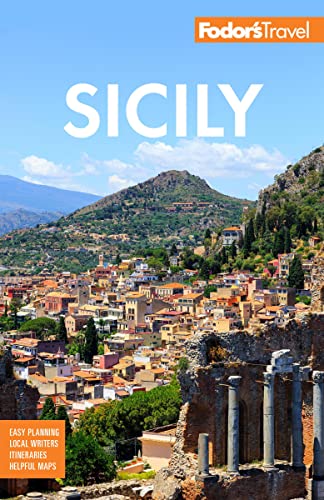Eating and Drinking Well in Sicily
Sicilian cuisine is one of the oldest in existence, with records of cooking competitions dating to 600 BC. Food in Sicily today reflects the island's unique cultural mix, imaginatively combining fish, fruits, vegetables, and nuts with Italian pastas and Arab and North African elements—couscous is a staple in Palermo.
It's hard to eat badly here. From the lowliest of trattorias to the most highfalutin ristorante, you'll find classic dishes that have long been staples of the family dinner table—basically pasta and seafood. In more formal restaurants, you'll find greater attention to detail and a more sophisticated atmosphere, while less pretentious trattorias tend to be family-run affairs, often without so much as a menu to guide you. There's also a new wave of creative restaurants that have come up with interesting versions of old standbys, using local and often organic ingredients and changing their menus with the season. No matter where you choose to eat in the most gregarious of regions in the most convivial of countries, you can expect a lively dining experience.
Sicilian Markets
Sicily's natural fecundity is evident wherever you look, from the prickly pears sprouting on roadsides to the slopes of vineyards and citrus groves covering the interior to the ranks of fishing boats moored in every harbor. You can come face-to-face with this bounty in the clamorous street markets of Palermo and Catania. Here, you'll encounter teetering piles of olives and oranges, enticing displays of cheeses and meats, plus pastries and sweets of every description.
Wines
The earthy nero d'avola grape bolsters many of Sicily's traditionally sunny, expansive reds, and it's often softened with fruity, bright frappato to make Sicily’s only DOCG wine, Cerasuolo di Vittoria. Red wines from around Mt. Etna that use the grapes nerello mascalese and nerello cappuccio have also gained renown. Sicily produces crisp white varieties, too, such as carricante, catarratto bianco, inzolia, and grillo. When it comes to sweet accompaniments, the small island of Pantelleria produces the smooth passito dessert wine, made from zibibbo grapes, while the Aeolian Islands are known for Malvasia delle Lipari.
Delicious Fish
Pasta con le sarde, with fresh sardines, olive oil, raisins, pine nuts, and wild fennel gets a different treatment at every restaurant. Grilled tonno (tuna) and orata (dorado) are coastal staples, while delicate ricci (sea urchins) are a specialty. King, however, is pesce spada (swordfish), best enjoyed marinato (marinated), affumicato (smoked), or as the traditional involtini di pesce spada (roulades).
Local Specialties
In Catania, you'll be offered caserecci alla Norma (a short pasta with a sauce of tomato, eggplant, ricotta, and basil). The mandorla (bitter almond), the pride of Agrigento, plays into everything from risotto alle mandorle (with almonds, butter, Grana cheese, and parsley) to incomparable almond granita—an absolute must in summer. Pistachios produced around Bronte, on the lower slopes of Etna, go into pasta sauces as well as ice cream and granita, while capers from the Aeolian Islands add zest to salads and fish sauces.
Snacks
Two favorite Sicilian snacks are arancini ("little oranges," or rice croquettes with a cheese or meat filling), and panelle (seasoned chickpea flour boiled to a paste, cooled, sliced, and fried). Other tidbits to look out for include special foods associated with festivals, such as the ominously named ossa dei morti ("bones of the dead," or rolled almond cookies). But the most eye-catching of all are the frutta martorana: sweet marzipan confections shaped to resemble fruits and temptingly arrayed in bars and pasticcerie (pastry shops).




